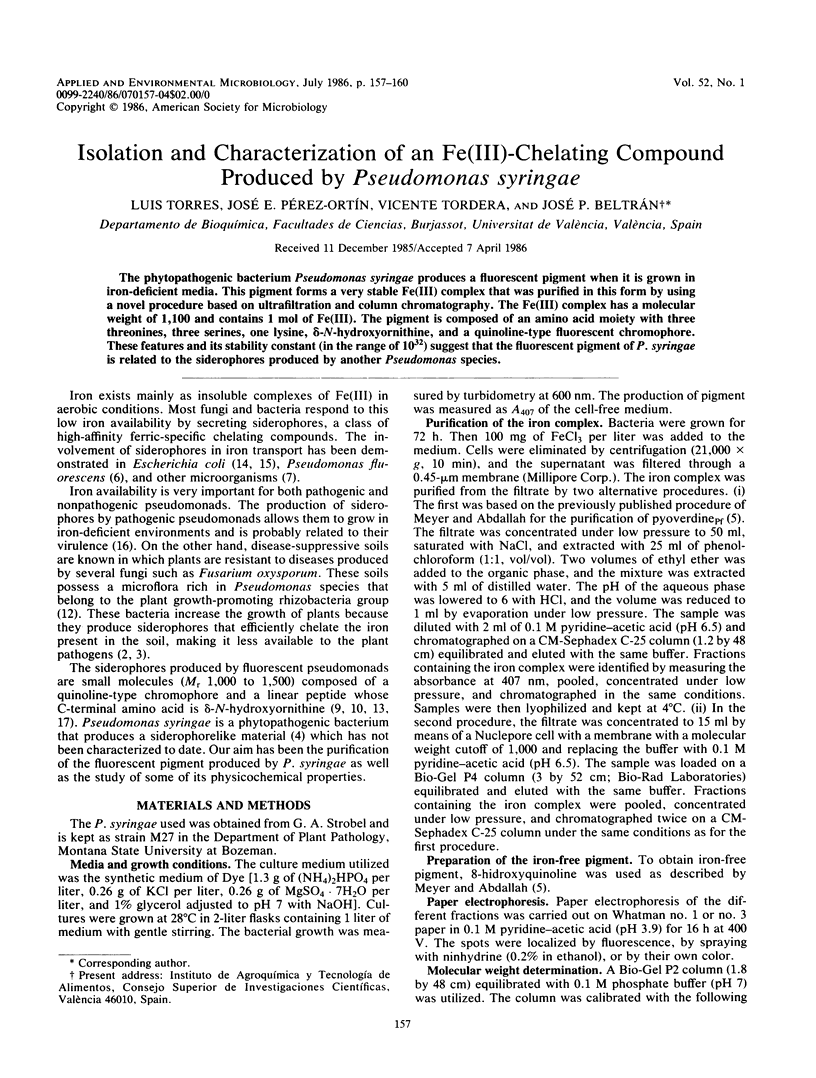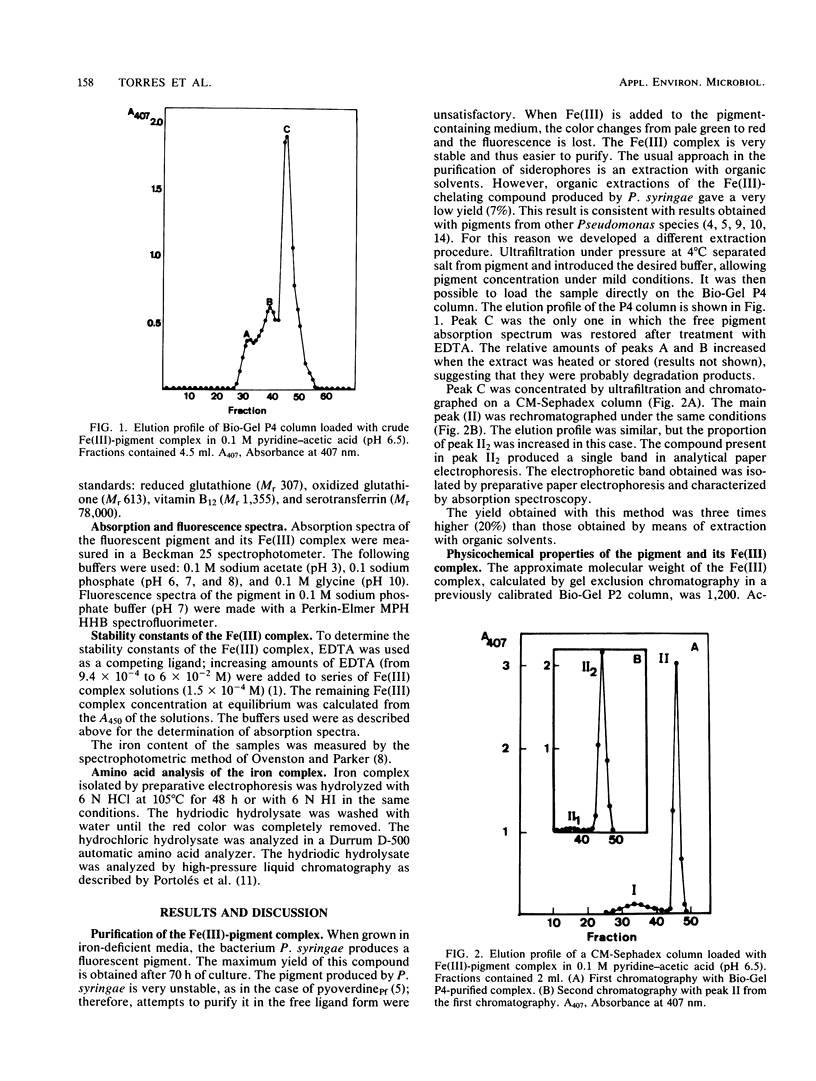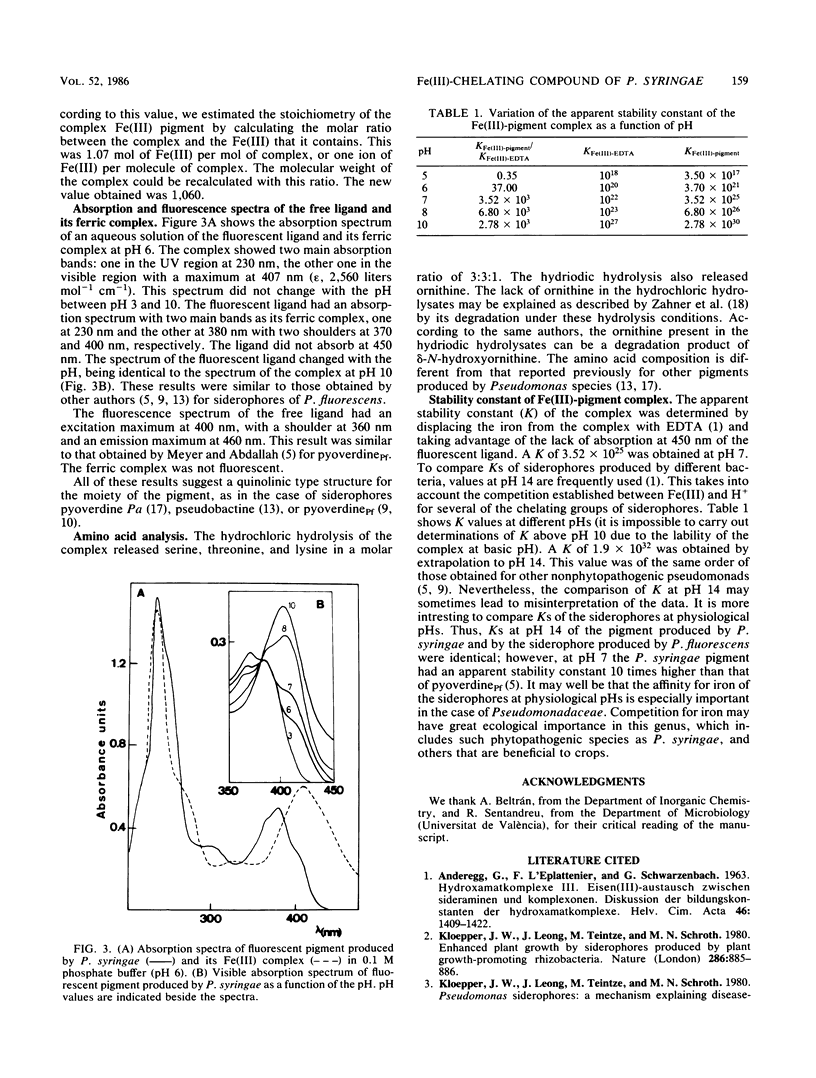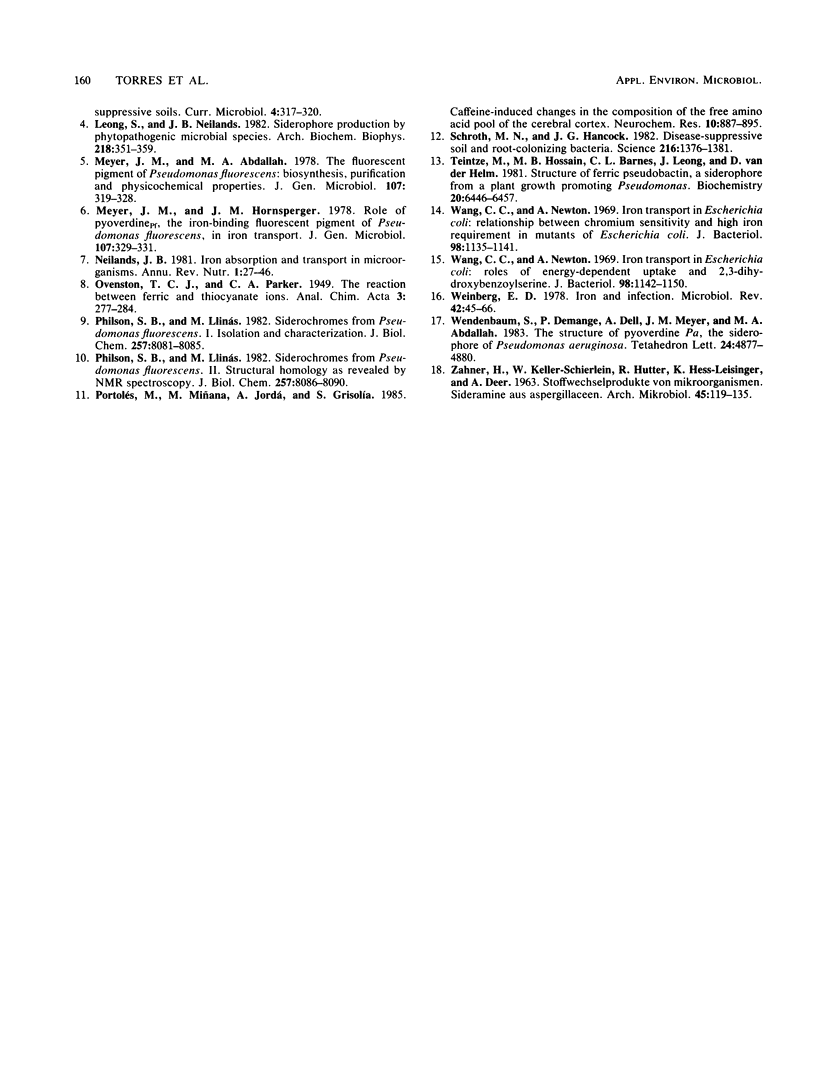Abstract
The phytopathogenic bacterium Pseudomonas syringae produces a fluorescent pigment when it is grown in iron-deficient media. This pigment forms a very stable Fe(III) complex that was purified in this form by using a novel procedure based on ultrafiltration and column chromatography. The Fe(III) complex has a molecular weight of 1,100 and contains 1 mol of Fe(III). The pigment is composed of an amino acid moiety with three threonines, three serines, one lysine, δ-N-hydroxyornithine, and a quinoline-type fluorescent chromophore. These features and its stability constant (in the range of 1032) suggest that the fluorescent pigment of P. syringae is related to the siderophores produced by another Pseudomonas species.
Full text
PDF



Selected References
These references are in PubMed. This may not be the complete list of references from this article.
- Leong S. A., Neilands J. B. Siderophore production by phytopathogenic microbial species. Arch Biochem Biophys. 1982 Oct 15;218(2):351–359. doi: 10.1016/0003-9861(82)90356-3. [DOI] [PubMed] [Google Scholar]
- Neilands J. B. Iron absorption and transport in microorganisms. Annu Rev Nutr. 1981;1:27–46. doi: 10.1146/annurev.nu.01.070181.000331. [DOI] [PubMed] [Google Scholar]
- Philson S. B., Llinás M. Siderochromes from Pseudomonas fluorescens. I. Isolation and characterization. J Biol Chem. 1982 Jul 25;257(14):8081–8085. [PubMed] [Google Scholar]
- Philson S. B., Llinás M. Siderochromes from Pseudomonas fluorescens. II. Structural homology as revealed by NMR spectroscopy. J Biol Chem. 1982 Jul 25;257(14):8086–8090. [PubMed] [Google Scholar]
- Portolés M., Miñana M. D., Jordá A., Grisolía S. Caffeine-induced changes in the composition of the free amino acid pool of the cerebral cortex. Neurochem Res. 1985 Jul;10(7):887–895. doi: 10.1007/BF00964626. [DOI] [PubMed] [Google Scholar]
- Schroth M. N., Hancock J. G. Disease-suppressive soil and root-colonizing bacteria. Science. 1982 Jun 25;216(4553):1376–1381. doi: 10.1126/science.216.4553.1376. [DOI] [PubMed] [Google Scholar]
- Teintze M., Hossain M. B., Barnes C. L., Leong J., van der Helm D. Structure of ferric pseudobactin, a siderophore from a plant growth promoting Pseudomonas. Biochemistry. 1981 Oct 27;20(22):6446–6457. doi: 10.1021/bi00525a025. [DOI] [PubMed] [Google Scholar]
- Wang C. C., Newton A. Iron transport in Escherichia coli: relationship between chromium sensitivity and high iron requirement in mutants of Escherichia coli. J Bacteriol. 1969 Jun;98(3):1135–1141. doi: 10.1128/jb.98.3.1135-1141.1969. [DOI] [PMC free article] [PubMed] [Google Scholar]
- Wang C. C., Newton A. Iron transport in Escherichia coli: roles of energy-dependent uptake and 2,3-dihydroxybenzoylserine. J Bacteriol. 1969 Jun;98(3):1142–1150. doi: 10.1128/jb.98.3.1142-1150.1969. [DOI] [PMC free article] [PubMed] [Google Scholar]
- Weinberg E. D. Iron and infection. Microbiol Rev. 1978 Mar;42(1):45–66. doi: 10.1128/mr.42.1.45-66.1978. [DOI] [PMC free article] [PubMed] [Google Scholar]


